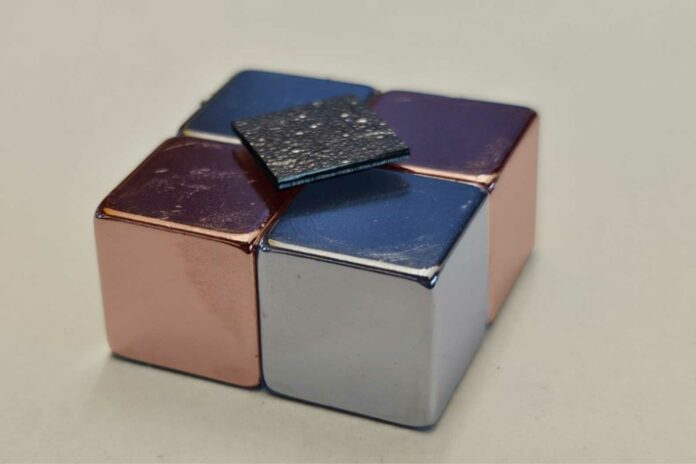Materials that are levitating can hang in a stable position without the need for mechanical or physical assistance. Magnetic fields cause the most prevalent kind of levitation.
Using graphite and magnets, scientists have created a floating platform that operates in a vacuum. They exhibit the diamagnetic levitation in the passive mode of a centimeter-scale massive oscillator, which is made by ensuring that the material is an electrical insulator even though it is very diamagnetic.
This levitating platform is remarkable since it runs off internal power sources and can help construct ultra-sensitive sensors for incredibly accurate and effective assessments.
Applying an external magnetic field to diamagnetic materials causes them to generate a magnetic field in the opposite direction, resulting in a repulsive force.
As a result, diamagnetic objects are buoyant above intense magnetic fields. In maglev trains, for example, levitation is achieved by applying a high magnetic field generated by powerful superconducting magnets to diamagnetic materials, seemingly defying gravity.
Magnets strongly reject graphite. Through the chemical coating of a silica-coated powder containing microscopic graphite beads, the researchers combined the coated powder with wax to create a thin, centimeter-sized square plate that hovers over a grid of magnets.
It is challenging to create a floating platform without the requirement for energy. The primary issue is a phenomenon known as “eddy damping,” which causes the platform to gradually lose energy. Think of it as the air resistance slowing down a spinning top.
OIST scientists aimed to create a platform with infinite energy storage capacity. This holds great potential for the development of novel force and gravity sensors.
However, there are further issues. One is called “motional energy,” essentially the platform’s movement. It can even aid in investigating minute quantum phenomena if we can lessen its motion.
So, to make a perfect floating platform, scientists must solve the eddy damping and motional energy problems. To overcome this, the scientists concentrated on developing a novel substance made of graphite. They converted graphite into an electrical insulator by modifying it chemically. This alteration causes no further energy losses and allows the material to float in a vacuum.
The scientists watched the platform’s mobility in real-time while it was in their experimental configuration. Based on this real-time data, they dampened the platform’s speed by applying a feedback magnetic force, which effectively cooled and slowed it down considerably.
“Heat causes motion, but we can decrease this movement by continuously monitoring and providing real-time feedback in the form of corrective actions to the system. The feedback adjusts the system’s damping rate, which is how quickly it loses energy. By actively controlling the damping, we reduce the system’s kinetic energy, effectively cooling it down,” Prof. Twamley explained.
“If cooled sufficiently, our levitating platform could outperform even the most sensitive atomic gravimeters developed to date. These are cutting-edge instruments that use the behavior of atoms to precisely measure gravity. Achieving this level of precision requires rigorous engineering to isolate the platform from external disturbances such as vibrations, magnetic fields, and electrical noise. Our ongoing work focuses on refining these systems to unlock the full potential of this technology.”
Journal Reference:
- S. Tian, K. Jadeja et al. Feedback cooling of an insulating high-Q diamagnetically levitated plate. Applied Physics Letters. DOI: 10.1063/5.0189219
